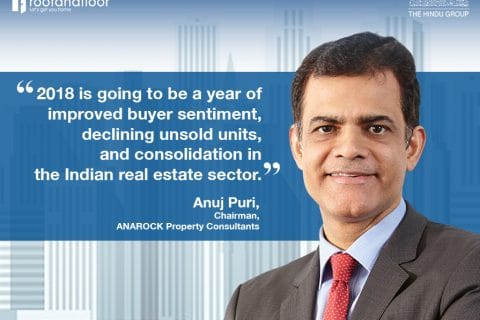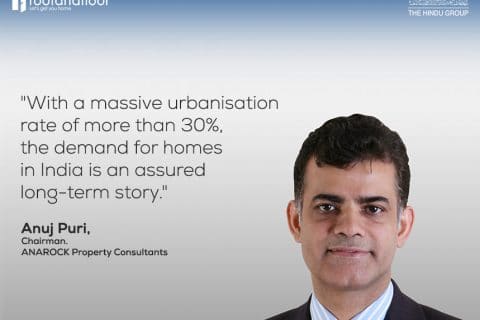Post the launch of the Real Estate Regulation and Development Act (RERA), the Indian real estate sector and infrastructure has been undergoing rapid transformation. A much-needed dose of discipline has been injected into the industry, as a result of which, it is expected to become more transparent, competitive, value offering, hassle-free, and above all, consumer-focused.
With a number of strict rules, regulations, and guidelines falling into place, the disorganised real estate sector is slowly being moulded into a regulated market, and the laws passed have been designed specifically to be beneficial for both developers and buyers.
GST is better for the industry in the long run
However, there is still going to be a substantial benefit from GST because of the additional transparency and accountability that it brings. Since GST is still in its initial phase, the real estate industry expects further changes in the coming year. For instance, stamp duty should be a part of GST.
Developers and contractors would have an easier time, as all the previously existing taxes have now been subsumed by GST. As such, its merits far outweigh any transitional difficulties that may arise, and the real estate sector is expected to benefit from the perks of GST, even if the rate declared is higher than the current one.
Brighter prospects await in 2018
While 2017 was the year of consolidation, the sector’s growth prospects for 2018 seem to be brighter, as the impact of RERA and GST will continue to unfold in 2018. With the affordable housing segment receiving industry status in last year’s budget and massive support from the Union Government under the Pradhan Mantri Awas Yojana, the sector will witness a steady rise in demand in the coming year.
Moreover, from the investor’s perspective, affordable apartments are easier and more profitable to sell or rent out, which helps assure a reliable return on investment. An increase in the number of affordable housing projects would further help tackle the lack of residential houses and replace slums and derelict buildings with urban redeveloped structures.
Realty growth must be matched by infrastructure
With the ever-worsening problem of population in Mumbai, the city also desperately needs smart roads capable of carrying the maximum number of people within the short time.
Implementing minor changes to our existing road network, such as ensuring the concrete is used instead of bitumen, getting rid of potholes, and removing illegal hawkers encroaching on the space, can make a big difference. Rebuilding and developing the city’s civic amenities, for instance, the construction of additional railway overbridges is also the need of the hour.
Creating dedicated lanes for public transport and emergency vehicles, such as ambulances and fire brigades, can help streamline traffic during peak hours and avoid unnecessary congestions. Additionally, all kinds of construction work for roads and other public property must be given only to reputed contractors with a good track record, to ensure the quality of work.
The Brihanmumbai Municipal Corporation has been making a lot of efforts to improve the current condition of roads in the city. In order to constantly improve congestion problems, these are a few areas which can be worked on:
- Bus stands are often built close to traffic signals. Buses driving in and out of traffic are one of the root causes of congestion. Hence, they need to be moved at least 150 metres away from traffic signals.
- Pavements are not meant to act as a free extension for stores or a marketplace for hawkers. Removal of hawkers from pavements would not only reduce overcrowding but improve road safety and traffic conditions as well.
- Public transport is one of the most critical components in the system.
- All road contracts need to come with Service- Level Agreements (SLAs), not only for quality but also for maintenance and repair. Strict penalties need to be levied on not meeting SLAs.
- Road safety and driver awareness programmes need to be undertaken by government departments, traffic police, and RTOs across districts, which will decrease the number of fatalities and make the city a better place to drive in.
In addition to the improvement in roads, at the infrastructure level, the city also needs to focus on efficiency and practicality.
A less-is-more approach, in this regard, should be adopted, to avoid the unnecessary racking up of huge bills and expenses because of a host of non-essential amenities. Rainwater harvesting and other methods of efficient urban restructuring are expected to be adopted, not just in new projects, but also implemented in older, existing projects, where the required infrastructure exists.
This article is contributed by Mr Amit Ruparel, Managing Director, Ruparel Realty
The views expressed here are solely those of the author and do not necessarily represent or reflect the views of RoofandFloor.





